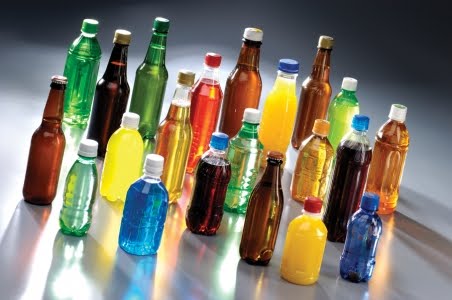
As many of you know, our priority project now in Greenyway is launching a line of eco-friendly BPA free reusable bottles (uff that tirade).
To reach the conclusion that this should be our first project, the truth is that we have had to investigate enough. Since it is not easy to get to the bottom of the whole truth about this topic. We do not want to be demagogues, but yes give you some notes about each of the types of bottles that we usually use in our daily lives, to have enough information when you choose your bottle.
Plastic bottles: what about plastic bottles? Already we have tried several times this topic, especially thinking about bottled water. Plastic bottles have great advantages: are cheap (if not take into account indirect costs), light and transparent. But they have two major drawbacks:
- Indirect cost (environmental) is very high: its manufacture from petrochemicals, consumes energy and pollute. But being mostly disposable worst comes next, and that she takes some 700 years to decompose, so producing a very high waste. It is true that they can be recycled, but even in this case its impact on the environment is much higher than of a reusable bottle.
- PET bottles are not suitable for reuse, widespread practice among users of this kind of product.
Glass bottles: Definitely does not have the plastic problems, since glass is inert and generally do not pose a health problem, or vary the taste of the liquids containing. Also, if we just use the regarding the Green container, they will be recycled and will be used to manufacture other bottles. Its disadvantages are mainly that they are somewhat heavy but above all that are fragile, so it can be dangerous to children, backpacks... because that can break.
Aluminum bottles: These bottles are used for hiking and are readily available, for example you can find them easily and very cheap in large areas dedicated to sports (I don't mention brands, but all we can imagine it, isn't it?). These bottles although they are not as fragile as the glass, if it is true that to be a fairly soft material aluminum dents easily. But this is not their main problem, its main drawback is that aluminum will oxidize and easily dissolves in the liquid contained in the bottle. In principle there are no studies showing toxicity of aluminum, but it is changing the taste of the water (that metallic taste so characteristic of these bottles). To avoid this, what manufacturers do is apply the inside bottles with a plastic coating that may contain BPA, so we are in the same as with plastic bottles.
Stainless steel bottles: For us the best (and really the only safe and eco-friendlyl) option. Stainless steel does not rust or dissolve any kind of substance in liquids containing bottles. What is 100% safe and does not alter the flavor. It is also a very tough material so its durability is practically eternal and above is completely recyclable to when end of life. But beware, not all steels are the same! The best steel for alimentary use, and to comply fully with all explained here is 304 steel, also known as 18/8 (18% chromium that gives the hardness, and 8% nickel, which gives the incorruptibility), other cheaper steel can give taste to water, and to finish oxidizing with time.
We have it clear: our bottle will be of highest quality 304 stainless steel, which has only one disadvantage: it is that it is a bit more expensive, but it's our health and improve the environment, what means one euro more or less for a bottle that is going to last a long time?
To want to be aware of this type of information? Join the movement Greenyway on our facebook page, every day we are more!


